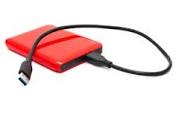 Now that we have scared the bejesus out of you with the likes of antics favored by the ransomware and cyber criminal class, we thought we would share some of the common backup tools that you can use to backup your computer. These are meant for the small business or individual users; we are assuming you are not an enterprise requiring the likes of an EMC. If you are the latter, you hopefully have a whole team to do this. For us little guys, though, it can be a tad daunting.
Now that we have scared the bejesus out of you with the likes of antics favored by the ransomware and cyber criminal class, we thought we would share some of the common backup tools that you can use to backup your computer. These are meant for the small business or individual users; we are assuming you are not an enterprise requiring the likes of an EMC. If you are the latter, you hopefully have a whole team to do this. For us little guys, though, it can be a tad daunting.
Backing up your data is essentially a way of copying and/or archiving your files and computer system. It allows you to restore data in the event of a data loss.
There are essentially 3 general categories of back up technologies that a small business or individual consumer can deploy. External device, online service or cloud storage of files. Being the belt and suspenders person that I am, I would actually encourage you to use 2 if not all 3 of these technologies to remain safe.
External Devices
Everything from small thumb drives to CDs/DVDs are considered external devices. You can choose to backup everything or be selective – do you really need directions to Aunt Mimi’s home where she no longer lives? Probably not. But you probably do need those irreplaceable photos of your last vacation. Any files that are necessary for you to run your business would of course warrant being backed up.
If you have an external USB hard drive, you can just back up to that drive using your computer’s built-in backup features. Occasionally connect the drive to the computer and use the backup tool, or leave it plugged in whenever you’re home and it’ll back up automatically. Pros: backing up is cheap and fast. Cons: If your house gets robbed or catches on fire, your backup can be lost along with your computer. For the latter reason, it may be highly preferred to store the backup device in a fireproof safe or even off-site.
Online Service
If you want to ensure your files stay safe, you can back them up to the internet with a service like BackBlaze, Carbonite, CrashPlan and MozyHome. For a low monthly fee (about $5 a month), these programs run in the background on your PC or Mac, automatically backing up your files to the service’s web storage. If you ever lose those files and need them again, you can restore them. Pros: Online backup protects you against any type of data loss–hard drive failure, theft, natural disasters, and everything in between. Cons: These services usually cost money, and the initial backup can take much longer than it would on an external drive–especially if you have a lot of files.
Cloud Storage
Backup purists will say this isn’t technically a backup method, but for most people, it serves a similar enough purpose. Rather than just storing your files on your computer’s hard drive, you can store them on a service like Dropbox, Google Drive, OneDrive, or a similar cloud storage service. They’ll then automatically sync to your online account and to your other PCs. If your hard drive dies, you’ll still have the copies of the files stored online and on your other computers. Pros: This method is easy, fast, and in many cases, free, and since it’s online, it protects you against all types of data loss. Cons: Most cloud services only offer a few gigabytes of space for free, so this only works if you have a small number of files you want to back up or if you can be very selective with what you backup.
In the interest of full disclosure, I do use all three technologies – but then again, I do have a collection of belts and suspenders, being the generally risk averse person that I am.










